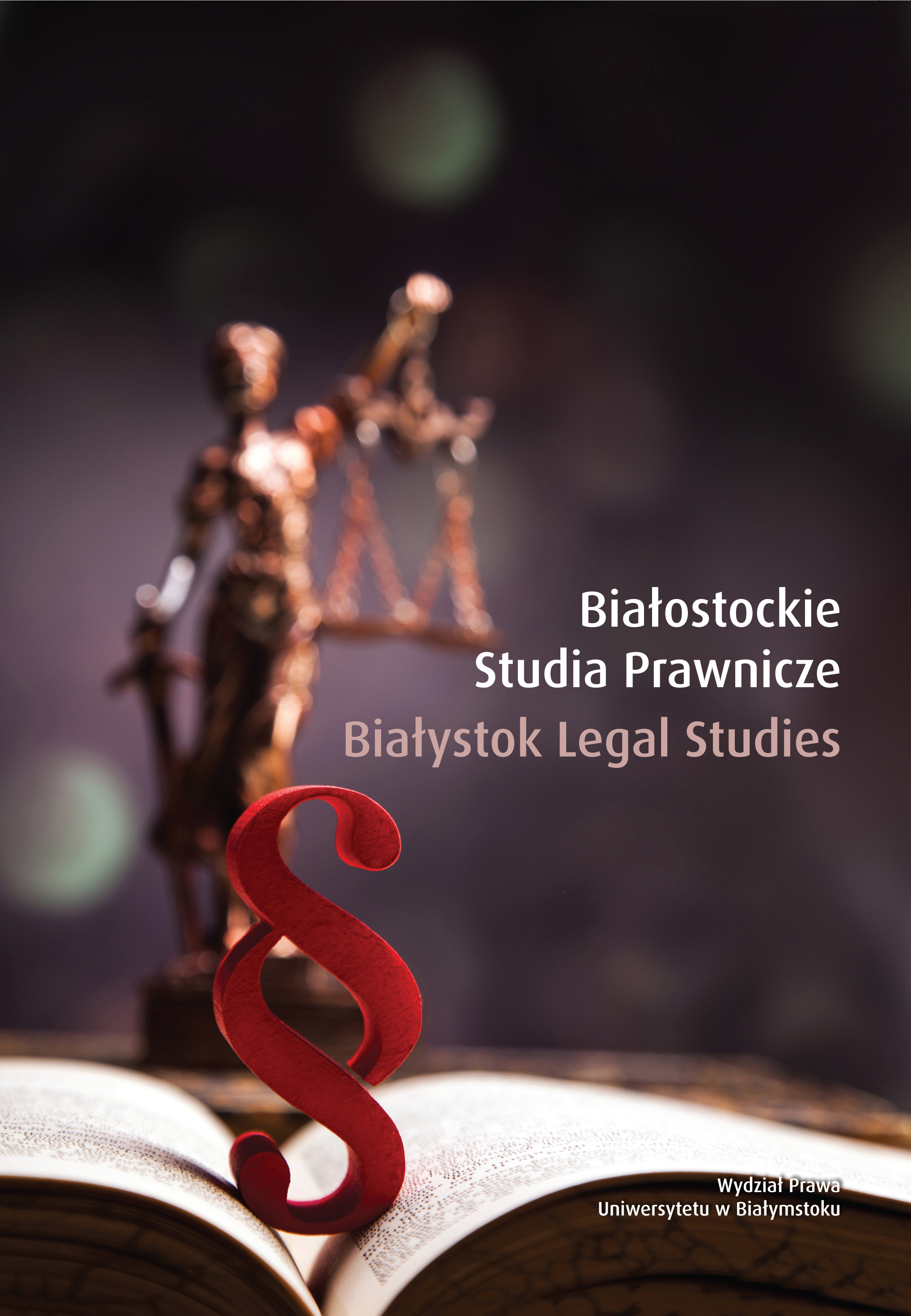The President of the European Council – from Rotation to Election
Abstrakt
This article discusses the principles of election of the President of the European Council, modified by the Treaty of Lisbon. The current procedure for selecting a permanent President of the European Council is presented against the background of the original model of the rotating presidency of both the European Council and the Council. It is worth mentioning that the Council, although in a modified form, has, until now, been using the system of rotating presidency. Key issues discussed in the article relate to two essential points. The first concerns procedural aspects of the election of the European Council president (including qualification requirements, the rules of election and the validity of the principle of incompatibilitatis). The second refers to an analysis of the potential impact of changes in the method of determining the European Council president on the scope of his competences.Bibliografia
Barcz J., Unia Europejska na rozstajach. Traktat z Lizbony. Dynamika i główne kierunki reformy ustrojowej, Warszawa 2010
Bremner Ch., Zdecydowała wolta Camerona. Kulisy wyboru Tuska na przewodniczącego Rady Europejskiej (1.09.2014.) http://www.polskatimes.pl/artykul/3558577,zdecydowala-wolta-camerona-kulisy-wyboru-tuska-naprzewodniczacego-rady-europejskiej,id,t.html?cookie=1 [29.01.2015 r.]
Closa C., Institutional Innovation in the EU: The ‘Permanent’ Presidency of the European Council (in:) Laursen (ed.), The EU’s Lisbon Treaty. Institutional Choices and Implementation, Farnham 2012
Craig P., Th e President of the European Council (in:) J.M. Beneyto, I. Pernice (eds.), Europe’s Constitutional Challenges in the Light of the Recent Case Law of National Constitutional Courts. Lisbon and Beyond, Baden-Baden 2011
Doliwa-Klepacka A., Stanowienie aktów ustawodawczych w Unii Europejskiej, Warszawa – Białystok 2014
Doliwa-Klepacki Z. M., Encyklopedia organizacji międzynarodowych, Warszawa 1999
Gostyńska A., Learning from Herman: A handbook for the European Council President, Center for European Reform, http://www.cer.org.uk/insights/learning-herman-handbook-eu-ropeancouncil-president#sthash.1Kuy3MVQ.dpuf [30.01.2015]
Grant C., Restoring leadership to the European council, “Center of European Reform Bulletin” z 1.04.2002r., zob. tekst http://www.cer.org.uk/publications/archive/bulletin-article/2002/restoring-leadership-european-council [26.01.2015]
Kto pokieruje sprawami Unii? Przedstawiamy sylwetki kandydatów (31.08.2014 r.), see. http://www.tvn24.pl/wiadomosci-ze-swiata,2/kto-pokieruje-sprawami-unii-przedstawiamy-sylwetki-kandydatow,463315.html [29.01.2015]
Pernice I., Democratic Leadership in Europe: Th e European Council and the President of the Union (in:) J.M. Beneuyto Pérez, I. Pernice (eds.), Th e Government of Europe: Which Institution Design for the European Union, Baden-Baden 2004
Sap J.W., Th e European President, “European Competition Law Review”, 2005, No. 1
Schermers H. G., International Institutional Law, vol. 2, Functioning and Legal Order, Leiden 1972
Szczerba-Zawada A., Pozycja ustrojowa Rady Europejskiej w systemie instytucjonalnym Unii Europejskiej, Warszawa 2013
Szczerba-Zawada A., Przewodniczący Rady Europejskiej, czyli o postlizbońskiej formule przewodnictwa w Radzie Europejskiej, “Przegląd Sejmowy” 2014, No. 4 (123)
Tallberg J., Bargaining Power in the European Council, “Journal of Common Market Studies” 2008, vol. 46. No. 3
Witkowska-Chrzczonowicz K.M., Dynamika rozwoju Rady Europejskiej w systemie instytucjonalnym Unii Europejskiej, Toruń 2014
Wojtowicz K., Projekt Traktatu ustanawiającego Konstytucję dla Europy – podstawy ustroju i porządku prawnego Unii Europejskiej, “Przegląd Sejmowy” 2004, No. 2



